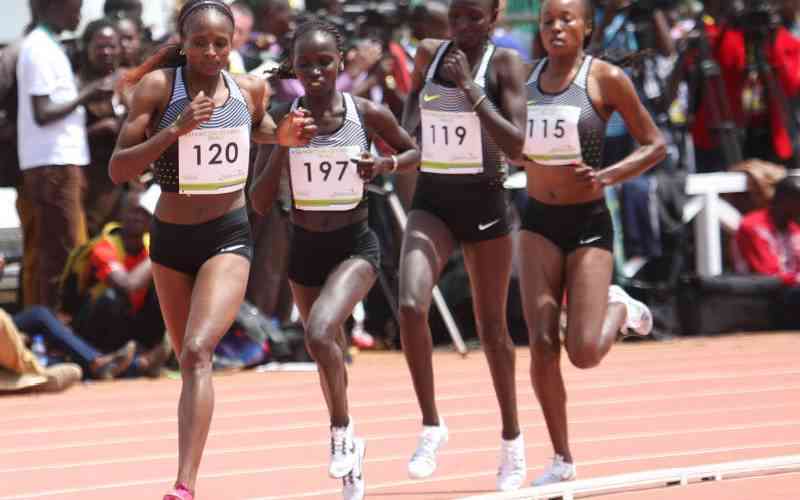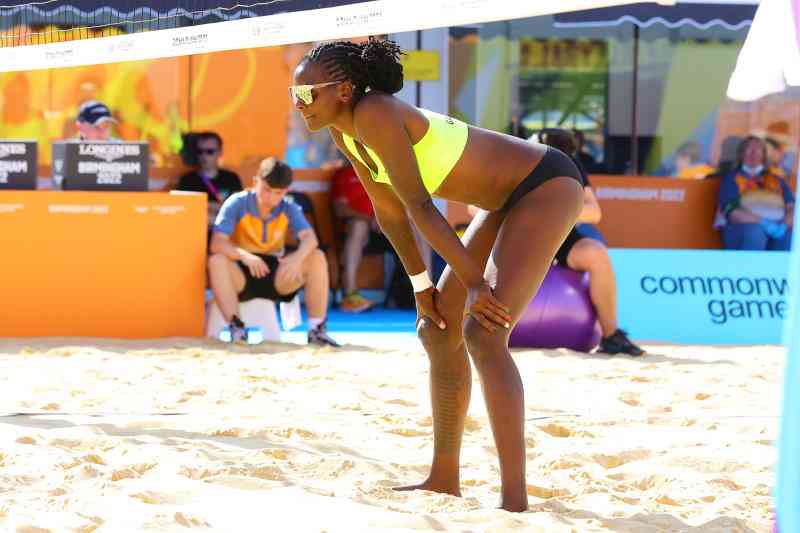By TITUS TOO
Two Kenyan athletes have become Internet sensations after a video of a high jump competition they took part in was posted on YouTube last month.
The video has attracted more than 3.1 million views worldwide due to the “ancient and rare” technique they use to clear the bar. More than a dozen copies have been posted to various sports websites.
The pair of high school students can be seen comfortably clearing two metres (over six feet) with a scissor kick. This technique is popular in many schools in Kenya that cannot afford the landing mattresses. Around the world, though, few professional athletes can jump that high using this method.
The two boys in the video are 16-year-old Richard Biwot and 20-year-old Hesbon Kiplagat. Both are students at ACK Kimogoch Secondary School in Nandi North District, Biwot in Form One and Kiplagat in Form Four.
Until The Standard On Saturday tracked them down recently, the two boys were unaware of the global sensation they have become.
When we visited Kimogoch Secondary, the two students were in class preparing for an examination. However, a teacher who was expecting us had already brought in a laptop and shown the boys the video that had gone viral.
“I had not seen the images before,” says Biwot, who fellow students refer to as ‘Maasai’.
He recalls that the action was recorded during the Nandi County zonal games held at the Mosoriot Teachers College in first term. He says he had no idea the event was being videotaped.
The footage went viral in Kenya in a version edited to the sound of vernacular hit song ‘Young Man’ by Alvin ‘Israel’ Koech. The song urges young men to shun ills like violence and exploit their talents. It was the perfect match for the video and the young athletes.
Biwot and Kiplagat say the high jump is just one of their sporting activities: They are the school’s favourite in volleyball and triple jump. The younger boy has only been competing as a jumper for less than two years.
“I started practicing the high jump in 2011 while at Tegeyat Primary School,” says Biwot. “My head teacher persuaded me to take up the sport.”
Last year, while still in primary school, he was second in national competition after achieving a height of 1.9 meters with the scissor kick.
“We did our best because we were told that there were trials to pick athletes for international championships in high jump,” he says.
Kiplagat, who is only an inch shorter than world-record holder Javier Sotomayor, says his height is an advantage in the high jump. He has never competed at national level, as he was knocked out after a knee injury at district level.
Stay informed. Subscribe to our newsletter
“My dream is to sail through in the sport and represent the country in the 2016 Olympic games in Rio de Janeiro,” says Kiplagat.
The technique he and others use, however, requires too much energy to clear the bar and is never used in global competitions (see glance box).
Unprofessional
Despite their impressive jumps, Biwot and Kiplagat have stiff competition locally. Nandi County’s best high jump athlete this term was Sosten Rop, a teenager from neighbouring Kebulonik Secondary School in Mosop. The barefoot students use a makeshift wooden frame as a high jump barrier.
“When I started the sport, I used to jump over fences and gates,” Sosten told The Standard On Saturday during an interview at the school. He says the unprofessional training often leads to injuries that hold back talented athletes. Evans Kirwa, another high jumper at Kimogoch, says poor sports facilities are holding back talented athletes. The North Rift, he points out, is emerging as a powerhouse in other sporting fields.
Biwot and Kiplagat’s hopes of international fame rest on getting the right equipment and learning the Fosbury flop. The two and other aspiring local high jumpers may have to follow in the footsteps of self-trained javelin thrower, Mr Julius Yego, also from Nandi County. Yego, ‘the YouTube athlete’, learned javelin-throwing techniques by watching online clips and became the first athlete to represent Kenya in the sport at the Olympics.
Motivates
Mr Christopher Mutai, a games teacher at ACK Kimogoch, says many athletes are limited to running due to lack of resources. “Our field has an undulating landscape and is only ideal for cross country running,” he says. “Students have to improvise their own ways of training.”
Frustrated with the poor facilities, many abandon field events for the track, which have produced the most successful athletes in the region.
The needs go beyond equipment, though: Mutai says international athletes Martin Lel, Asbel Kiprop and Laban Rotich funded construction of a dormitory in the school, which benefits students who want to reside and train in sports.
Mr Stephen Kolil, the school’s principal, says frequent visits by former students, some who run for Qatar, motivates upcoming athletes. Ms Eunice Sugut, a games mistress at Kebulonik, says talent discovered in primary schools is wasted at secondary level due to poor training facilities.
 The Standard Group Plc is a
multi-media organization with investments in media platforms spanning newspaper
print operations, television, radio broadcasting, digital and online services. The
Standard Group is recognized as a leading multi-media house in Kenya with a key
influence in matters of national and international interest.
The Standard Group Plc is a
multi-media organization with investments in media platforms spanning newspaper
print operations, television, radio broadcasting, digital and online services. The
Standard Group is recognized as a leading multi-media house in Kenya with a key
influence in matters of national and international interest.
 The Standard Group Plc is a
multi-media organization with investments in media platforms spanning newspaper
print operations, television, radio broadcasting, digital and online services. The
Standard Group is recognized as a leading multi-media house in Kenya with a key
influence in matters of national and international interest.
The Standard Group Plc is a
multi-media organization with investments in media platforms spanning newspaper
print operations, television, radio broadcasting, digital and online services. The
Standard Group is recognized as a leading multi-media house in Kenya with a key
influence in matters of national and international interest.








